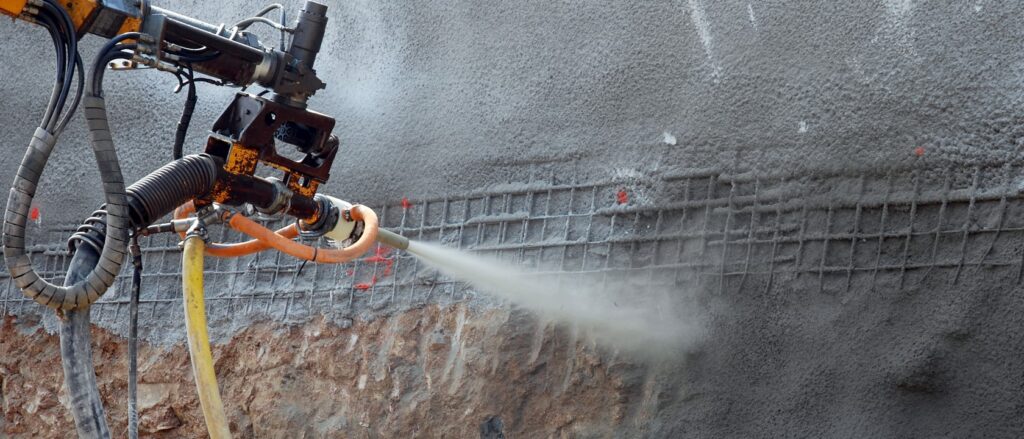
Any implemented method that seeks to stabilise an unstable or insufficiently stable slope is referred to as slope stabilisation. Slope stabilisation techniques are used to raise a slope’s Factor of Safety to a level that is deemed appropriate. The following major categories are used to classify stabilisation techniques:
- Removal and defence: removing the unstable material that often covers the slope’s upper layer and installing safety measures (e.g., nets).
- The term “soil stabilization” refers to all actions taken to improve the soil’s mechanical characteristics, hence boosting its shear strength and the slope’s stability. The two types of stabilisation that are most frequently utilised are chemical (lime, cement, fly ash, etc.) and mechanical (compaction, dewatering, mixing, etc.).
- Stabilization of structural supports: Structural supports work to make the slope more stable. Pre-stressed anchors, rock bolts, piles, soil nailing, geosynthetic reinforcement, retaining walls, shotcrete, and other methods are among them.
- Water drainage: Increased pore water pressure results from the presence of water in the soil or rock mass. Due to the weakening of the bonds holding the particles together and their propensity to slip, water pressure lessens the stability of the slope. Drains are used to limit water input and regulate the level of the groundwater.
Reasons to Use Fibers Instead of Mesh and Rebar
Reduction of Material: Shotcrete can follow the curves of the slope thanks to material reduction caused by FRS. Mesh and rebar are challenging to set up over uneven ground surfaces at a constant height. To extend from the ground’s surface and cover the mesh or rebar, additional shotcrete is needed.
Labor savings: Compared to mesh or rebar, fibre reinforcement of shotcrete requires less time and expertise. When expert labour is highly expensive or unavailable, fibre reinforcement is advantageous. The decreases in labour and material costs open the door to a quicker schedule and further cost savings in other areas.
Design Considerations for Slope Stabilization
Reviewing the design factors for slope stabilisation will make it simpler to decide between steel fibres and mesh for a specific project. For slope-stabilization projects, the designer should consider the following factors:
Slope height and angle—Steep slopes are frequently challenging or impossible to install mesh and rebar without specialised tools like man lifts, which are positioned on the project’s sturdy roadway below.
Ground surface condition—To hold the mesh or rebar in place, pins must be pushed into the ground. Depending on the type of soil or rock, this may be challenging. It could be challenging to get the necessary cover on both sides of the mesh and rebar if the ground is heavily fragmented or uneven.
Ground Water
To prevent a buildup of water pressure on the rear of the shotcrete face due to ground water, drainage must be provided. Water can be removed via horizontal drains, geocomposite drainage boards, and weep holes.
Rock bolt or soil nail spacing: The shotcrete face must be constructed to span between the anchors if rock bolts or soil nails are necessary for support.
Earth pressures and arching ability
Earth pressures and nail-head locations will experience negative bending moments whereas the sand and midspan between the nails will experience positive bending moments. The strength of the soil affects how big these moments are. To withstand huge moments that are more than what steel fiber-reinforced shotcrete alone can handle, particular regions may be reinforced with conventional mild steel. To prevent a punching failure, the traditional reinforcement (rebar or thick mesh) will also add some ductility in shear friction
freeze-thaw issues
Frost-sensitive soils that are situated in freezing zones and have access to groundwater require special treatment. It is challenging to prevent shotcrete from cracking or heaving if ice lenses are permitted to form beneath a shotcrete facing.


